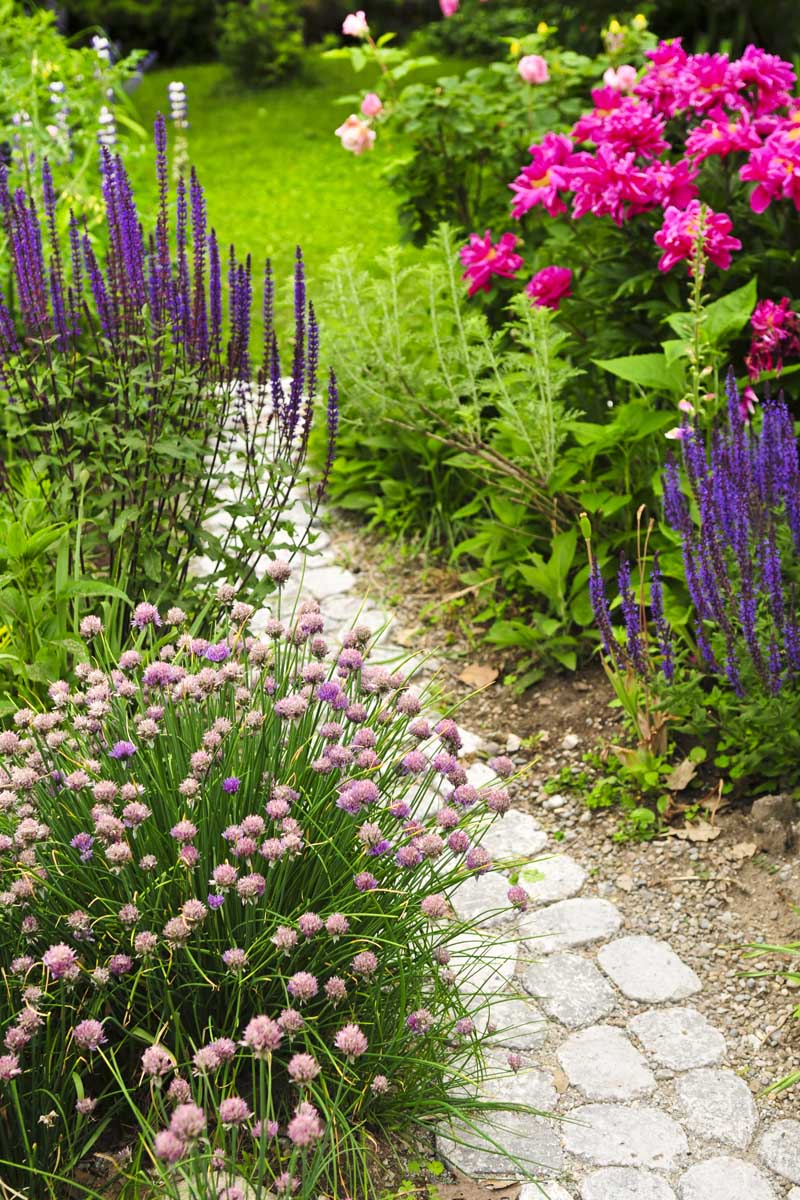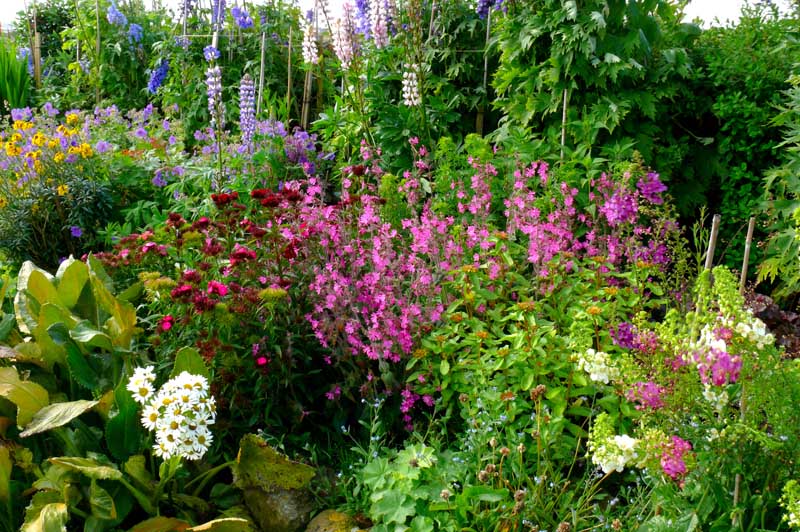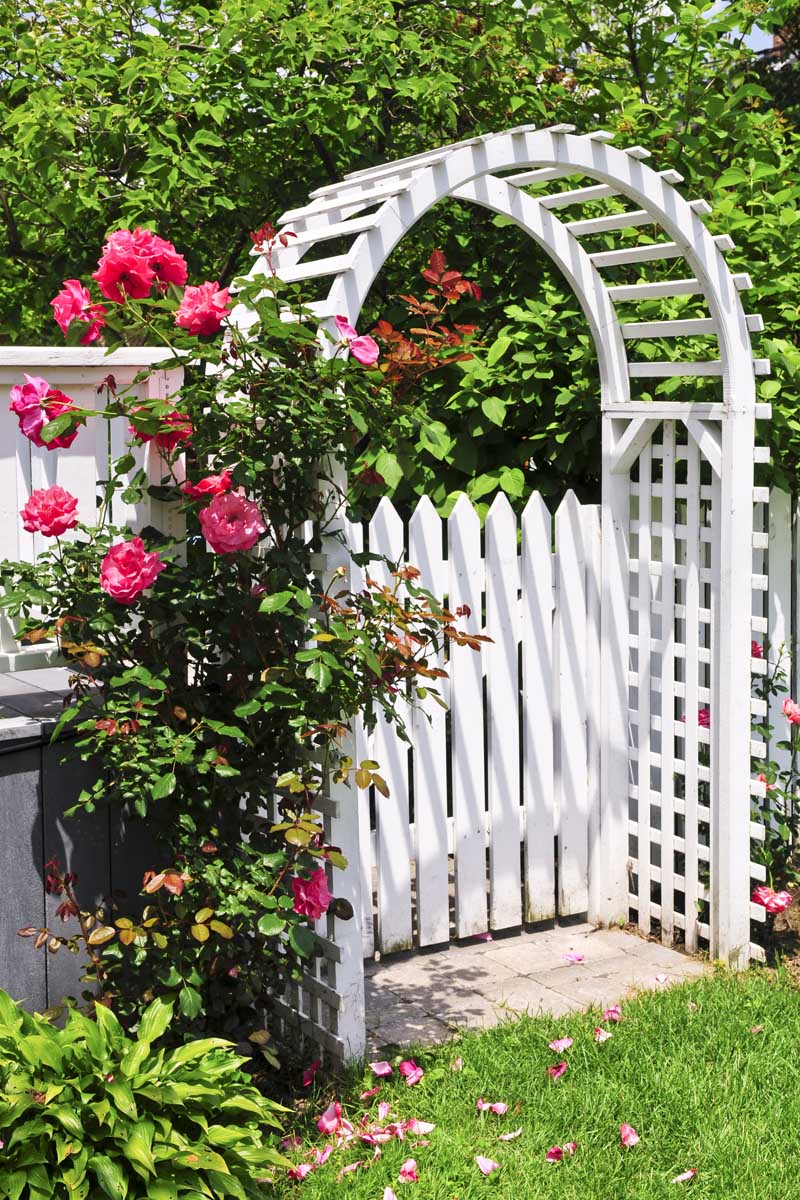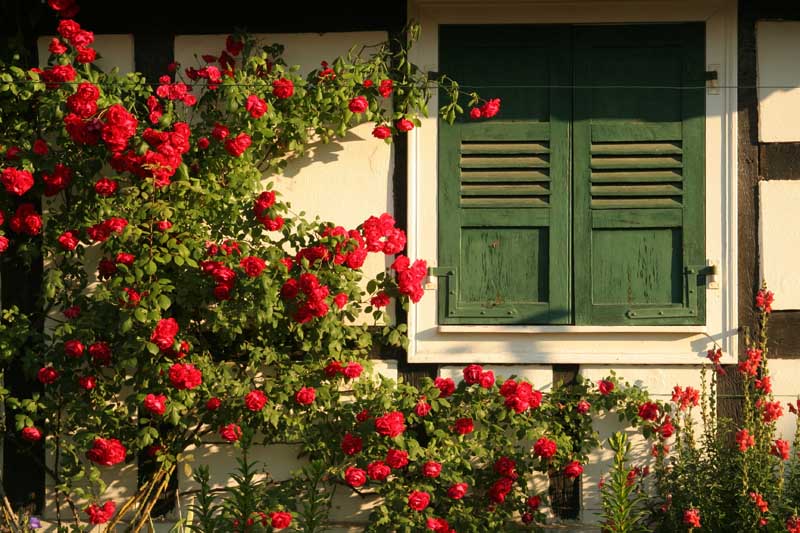There’s nothing more appealing than the building and landscape designs of yesteryear, especially when this applies to an old-fashioned cottage garden.
Once implemented solely for its usefulness, with edible plants as the primary ingredient, today’s version has remained much the same with exception to the fact that most gardeners nowadays seem to use their growing spaces more for their cheerful, relaxing qualities than their usefulness in the kitchen.
The cottage garden today provides a quiet sanctuary from the chaos associated with modern times. The only chaos here comes from the assortment of informal plantings.

We link to vendors to help you find relevant products. If you buy from one of our links, we may earn a commission.
Rustic (or romantic) structures such as arbors are traditional mainstays, as well as the occasional found object weaved in here and there.
Suitable Home Styles
You don’t necessarily have to live out in the country in order to create one of these old-timey gardens. In fact, you can just as easily live in an urban environment.
Cottage gardens are well suited to either one, however, it’s more the home itself rather than space that will determine whether or not this landscape style is right for you.
Cottages of all types, log homes, and those having a country style of another sort will easily find themselves right at home with this informal design. More modern dwellings, however, may not complement this type of landscape.
Design Elements
A cottage garden should be located in a sunny area, usually along a walkway towards the front entrance and embellished with a rustic-looking gate or arbor of some kind.
The path leading up to the front door is normally characterized by straight lines with an abundance of flowers spilling over each side. This can be edged with brick or a similar material, but plants will soften the straight edges, giving it a more casual feel.

Regardless of where it leads you in the landscape, paths are an important element in this type of design.
Paths can help guide the eye to charming accents and focal points, such as a bench or tree. Keep paving elements simple, with bricks, stone slabs, or cobble paths. Or better yet, try a mixture of all of these in different sections of the paved area to simulate layers of age and additions made with time.
Whatever you choose should always complement the surroundings, and other elements or structures within the space.
The cottage garden can be enhanced with a few simple ornaments like birdbaths, sundials, or stone statues. Used sparingly, found pieces can also help to pull the landscape’s scheme together.
Typical items might include a watering can or old garden tools, depending on the style of the home and other structures. The addition of casual seating will also help to create a welcoming atmosphere.
It also provides the gardener, and others, with a quiet place for reading or simply enjoying the beauty of the landscape’s design.

The key to any cottage garden’s appearance is the use of deep borders, overflowing with a medley of colors and forms. Structure is also important, and necessary to hold the design elements together.
Strong framework in the form of arbors, pergolas, gates, gazebos, or picket fencing should be implemented in order to maintain the abundant flowers and foliage.
These structural elements also help define space and should complement the surroundings as well.
What to Grow
Cottage gardens contain a diversity of plants, delighting all the senses and creating a natural, relaxed atmosphere. There are many textural plants available that are pleasing to touch, such as the soft, furry leaves of lamb’s ear.
A variety of herbs offer enticing aromas, and often provide great ground covers. Intriguing colors and interesting shapes throughout the space will hold the eye’s attention, but nothing is more pleasant than the sweet aromas emanating from fragrant plants such as jasmine and roses.
Grassy areas should be minimized, with planting emphasis focused on herbaceous flowers and the like rather than trees and shrubs.

However, small fruit trees, flowering shrubs, and ornamental grasses are paramount for creating structure. Deciduous trees, such as crape myrtle or redbuds, add structural height and seasonal interest, providing lovely fall foliage.
Shrubs, like lilacs, give the space a structural backbone as well. Evergreen shrubs can provide year-round interest and an appealing backdrop for flowers.

Annuals (like pot marigolds, sweet alyssum, impatiens, poppies, snapdragons, cosmos, nasturtiums, and more) offer loads of showy color.
Try to include a variety of self-sowing annuals or biennials for a pleasant surprise as they return each year in new locations.
Choose plants such as sweet William, forget-me-not, bachelor’s button, sweet pea, and johnny jump up, for example.
A wide variety of perennials in the cottage garden will provide long-lasting stability, returning each year as well. Include some that bloom throughout different seasons to ensure continual color and interest in the garden.
Popular perennials include garden phlox, bleeding heart, hollyhock, foxglove, and columbine.
Implementing herbs and vegetables not only brings additional old-timey charm, but will make the space more useful as well, saving a bit of money on your grocery bill throughout the warmer seasons.
Don’t forget this key staple of cottage garden design: flowering vines.
Try honeysuckle, wisteria, morning glory, or clematis. And of course, no cottage garden is ever complete without climbing roses.
Allow vines to adorn gates and fences or to simply climb over arches, arbors, or pergolas. Vines are often used to soften hardscape features while providing visual height, additional interest, and privacy.

Mixing various plant textures throughout the acreage will help give it depth and enhance its overall unity. Bushy planting will also create some dimension.
Groupings of one type of plant, or a few that are similar to one another, can be repeated throughout the space to create further visual impact. Repetition of one or more colors is a good way to tie everything together.
Beds in the cottage garden should be prepared with organic materials such as compost, to improve soil quality and promote healthier and more vigorous plant growth.
Once the plantings have established themselves, they will generally require minimal maintenance.
Weeds are not often a problem, thanks to the overwhelming assortment of plants. Even so, a light covering of mulch such as bark chip or shredded leaves will still be greatly welcomed and will help to limit the growth of any weeds that do decide to make an appearance.
Most of the chores required will be limited to the occasional watering, or trimming of vines when necessary. There are some gardeners that prefer to deadhead spent blooms to encourage nonstop flowering as well.
However, if the plants have been selected carefully for multi-seasonal interest, something should always be in bloom. Therefore, deadheading is not required. It is more of a personal preference of the individual hobbyist.
Allowing seed heads to form will not only create unique visual interest during the off-season, but will serve another purpose as well: these can be collected and the seeds may be scattered throughout the area to start new plants.
With the arrival of spring, your cottage garden will take on new life with the emergence of plants popping up in some interesting locations.

There’s nothing more gratifying than a welcome retreat from today’s hectic world. An old-fashioned cottage garden can be just what the doctor ordered.
With an abundant mix of beautiful flowers and foliage spilling out from their confines, a cottage garden is simply organized chaos at its best.
What’s your favorite feature of the cottage garden? Share your tips with us in the comments!
Love the idea of building a cottage garden! More pictures for inspiration would be awesome ???? I have a lot of cedar mulch so wondering how the best way to make bordered pathways would be in a large garden plot? Also how to prepare the ground for the mulch pathway ? Spray then landscape fabric?
Cardboard layer, then mulch.